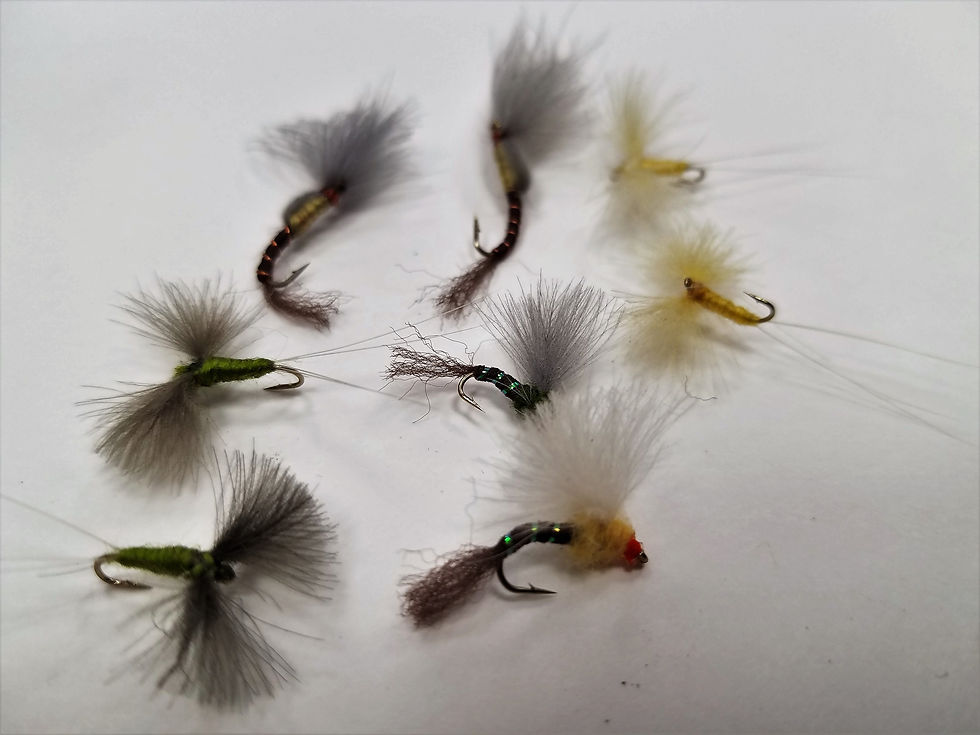Fly Fishing Report for the Upper Delaware and Catskill Rivers

Out of the fog comes Mr. Brown
WEEKEND OUTLOOK
This weekend anglers visiting the Upper Delaware and Catskill Rivers will find good conditions all around. Just about all of our local rivers are wadable and fishing well. Overall angler pressure is very light. Over the last 2 weeks I have been floating full days with the majority of the river being void of humans.
There is good insect activity around the system but there is a big difference in activity on each river and section. The best dry fly action remains on the Upper West Branch and Upper East Branch. On these sections the daily hatches are reliable and the fish are in a daily pattern of feeding whenever insects are present. On overcast days feeding activity can happen at any time.
The Beaverkill, Willowemoc, Lower East Branch and Main Delaware have good amounts of bugs but the activity is more condensed into the early and late day periods. The trout in these rivers are far more opportunistic in their feeding habits so blind casting the water is effective. Right now there is good action blind fishing Isonychia and Attractor flies. If you plan on fishing these freestone rivers remember to target areas around the deepest pools. Although the rivers are bank full and looking great, the early summer was dry. Most all of the trout moved to deep pools and have not yet moved back to every water type.
Currently Olives, Sulfurs, Isonychia and Cahills are about in enough numbers to keep the fish interested. In some area there are sporadic flurries of huge insects. These are possibly Hex or some other burrower type insect that looks giant among the smaller insects of summer. It is also flying ant season and some areas have already seen swarms of these terrestrial insects cover the water.
During the periods of surface feeding #16 and #18 Olive and Sulfur Dry flies have been working well for me. Thorax Style, Traditional and Cripples have been equally effective. Recentlly in the gin clear water we had trouble fooling some fish. Our CDC Knock Down Duns and CDC Slow Water Cripples are the solution to these fussy fish.


The nymphing has been best on the drop offs at the heads of pools and in the more shallow riffles. The best action is coming on small nymphs. The consistent takes have been on # 16 and #18 patterns. The most productive have been trigger nymphs, hot spot nymphs and the old standard pheasant tail.


The streamer bite has slowed down since the water became gin clear again. We have been taking fish every day but we have had to change tactics and flies to stay successful. The main change in tactics has been to target water that is broken up with hydraulic features, small standing waves and any turbulence. The other tactic that has been working it targeting the deep water where you can't see the bottom. This is slow methodical fishing but it has been producing some big fish even in bright sunshine.
The fly choice is also important now. I have switched over to flies that are translucent and sparsely dressed. These style always performs best in clear water and bright sun.
Below are some examples
Ken's SImple Streamer

Ken's Polar Minnows

In the coming weeks the fishing will continue to improve. The pattern of early and late day dry fly action will continue until we start getting cooler weather. At that time the action will become an all day event. We are also entering into one of the best time periods for nymphing. The next 2 months are prime time for running the numbers up with nymph rigs.
Now is the time to give us a call to plan your fall fishing trips. 607-290-4022
We are also now taking reservations to fish with us this winter in the Tampa Bay Estuary. Give us a call to plan your winter getaway!























